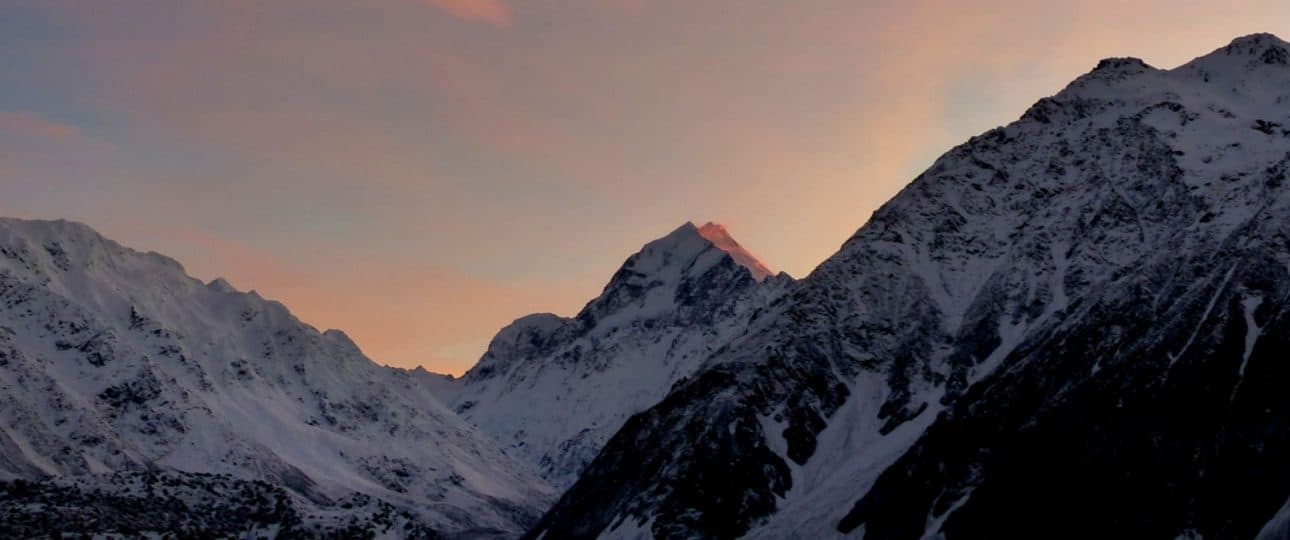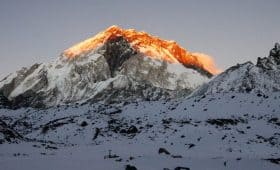Can I do Everest Base Camp Trek in February?
To give you a straight answer, yes, Everest Base Camp in February is doable. With the right equipment, clothing and a professional guide, Everest Base Camp is possible in February too.
And we here at Mosaic Adventure are here to help you with everything you need!
Although Spring and Autumn (March-May and September – November) are supposedly the best seasons you could go trekking to Everest Base Camp, February will be a whole new experience. With fewer trekkers on the trail and the clearest skies, you will be in for a real treat.
And if you are looking for something off the mainstream, we here at Mosaic Adventure are here you help you out all through the year.

They say February is not one of the best months to be at EBC because of the brutal winter, but we have at least 4 trips only for February! And I personally love going there myself and go with my clients every February!
Let me guide you through everything I know about trekking to the Everest Base Camp in February.
As unforgiving as the weather can be, February will offer the clearest blue skies to give you the most uninterrupted view of the Himalayas that there is.
It is a relatively dry month so typically there is lesser rain and snow so there will be fewer clouds and humidity to give you a clear mountain view.
The weather around the mountains is always unreliable. On an average, it will still be pretty cold in February. February is marked with relatively warmer days than December and January, but it will still be really chilly at nights.
All you have to do is carry enough warm clothes (hire a porter to help you with the load), and you will be just fine. Don’t miss out on down jackets and the right temperature rated sleeping bag and trek to Everest Base Camp with us this February!
Table of Contents
- Recommended itinerary to complete Everest Base Camp Trek in February
- Weather Conditions for Everest Base Camp Trek in February
- HIghlights of Everest Base Camp Trek in February
- Other Recommended Treks in Everest Region for February
- Tips for Everest Base Camp Trek in February
- What to Wear for Everest Base Camp Trek in February?
- Equipment List for Everest Base Camp Trek in February
- FAQS
- In a nutshell,
Recommended itinerary to complete Everest Base Camp Trek in February
Here is a suggested 14-day itinerary designed for completing the Everest Base Camp Trek in February.
Day 1: Arrival in Kathmandu (1345m/4412ft), meet at the airport, and transfer to your hotel. Pre-trek meeting in the evening.
Day 2: Depart from your Kathmandu hotel to catch a short flight to Lukla (2840m/9320ft). From Lukla, trek to Phakding (2610m/8560ft) – approximately 3.5 hours.
Day 3: Trek to Namche Bazaar (3440m/11290ft) – Approximately 6 hours.
Day 4: Spend the day acclimatizing in Namche Bazaar with a side trip to higher altitudes before returning to Namche.
Day 5: Trek to Tengboche, also known as Tyangboche (3860m/12660ft) – Approximately five hours.
Day 6: Continue trekking to Dingboche (4360m/14300ft) – Approx. 5 hours.
Day 7: Another day dedicated to acclimatization.
Day 8: Trek to Lobuche (4940m/16207ft) – Approx. 5 hours.
Day 9: Trek to Everest Base Camp (5300m/17400ft) and return to Gorak Shep (5170m/16961ft).
Day 10: Begin with a sunrise viewing hike up to Kalapatthar (5545m/18192ft), then trek to Pheriche (4270m/14070ft) – Approx. 7 hours.
Day 11: Return trek to Namche Bazaar (3440m/11290ft) – Approximately 6 hours.
Day 12: Trek from Namche to Lukla (2840m/9320ft) – Approx. 6 hours.
Day 13: Fly back to Kathmandu and transfer to your hotel.
Day 14: Departure, or extend your tour for other activities in Nepal.
Our professional team ensures a safe and enjoyable trek throughout the year, including February. Join us for the trek of a lifetime!
Weather Conditions for Everest Base Camp Trek in February
Shishir Ritu or the Winter season in Nepal starts in Magh and ends in Falgun (mid-January to mid-March). This is the coldest season in Nepal for the year.
February falls within Nepal’s winter which means it will be freezing early on in the month and will be very cold by the end.
So how is the weather up there at EBC in February?
February is winter still but it is not the coldest in my experience. Maybe I am used to it but even others have dealt it with appropriate gears and clothing.
It is a relatively dry month so typically there is little rain and snow, not to be taken for granted, of course. And there are fewer clouds and the humidity is low too so the mountain views are clear and sharp.
Temperatures and climatic conditions will differ as you go up in altitude or descend. Likewise, there will vary with different treks. Snow falls can be expected in areas of high altitude while low-lying areas experience cold winds throughout February.
Temperatures can fall down to a maximum of -20 degrees at the Everest Base Camp. If the temperature isn’t cold enough, the cold winds will definitely get to your bones.
Bottom line, it will be REALLY cold.
Everest Base Camp Tour usually starts in Lukla at 2,860 metres (9,383 ft). High passes and all the Basecamp can be entirely covered in snow, which means they can be closed for trekking if there are too much snow and ice. And although they are mostly closed from December to January, if you are lucky, they can be open during February.
If you let us know prior, we can let you know if the routes are open for trekking before you book your trip to Nepal.
Always expect passes and base camps to have more extreme conditions than the lower and shorter treks.
It will be quite cold in the mornings and evenings; the cold again depends on the elevation that you will be at (higher you go the colder it will get). The temperature on an average will range from -5 C inside the tea house to around -10 C outside.
With the sun out during the day, it will be pretty warm. At higher elevations in places like Dingboche, Lobuche and Gorak Shep, the temperatures can go down to -20C at nights.
All you have to do is carry enough warm clothes (hire a porter to help you with the load), and you will be just fine. Don’t miss out on down jackets and the right temperature rated sleeping bag and trek to Everest Base Camp with us this February!
Generally, the days are always clear in the winter season in Nepal. Offering you the best view of the mountains in December, January and February. Hence February is a good month for trekking to Everest Base Camp.
If you still are adamant on trekking in Nepal in February, well then, prepare yourself for snow, winds and a really cold climate!
Want more information? Send us your query, and our experts will get back to you within 24 hrs.
HIghlights of Everest Base Camp Trek in February
The best part about trekking in Nepal in February has to be the isolated trails on your trek. The trails will be packed with trekkers during full-season. And not to forget; the tea houses sometimes run out of accommodation during these peak hours.
February is the off-season for trekking in Nepal. Which will let you enjoy the isolated trails and empty guesthouses.
If you want to steer away from the crowd, then February is probably the best time to be trekking in Nepal.
- At the Base Camp of the world’s tallest mountain Mt. Everest
- Beautiful view of the snow covered mountains as soon as you begin your trek
- Crisp and clear blue skies all through your trek
- Namche Bazaar, world’s highest trading centre
- Gorak Shep (5,164 m) is a frozen lakebed covered with sand which sits near Mount Everest and a final stop on the trek to Everest Base Camp.
- Kala Patthar
- Tenzing Norgay Sherpa Monument
- Tengboche Monastery (3,867m)
- Beautiful night sky
- The mountain views are best in the winter, with clear weather almost guaranteed
- Get a great bargain on nicer hotels in the low season
- Despite the cold nights, the sunny winter days are great for trekking
- Less crowd
- Peaceful
- More choices for accommodation
Other Recommended Treks in Everest Region for February
If the Everest Base Camp trek is too challenging for you can opt for a shorter duration/distance trek like the Everest Panorama Trek or an easier one like the Jiri to Everest Base Camp Trek. This is a 10-days trek all the way to Thyangboche at 3860m to give you the best view of Everest Mountains within the shortest duration.
Or you could do a 15-day trek to Gokyo and Gokyo Ri in the Everest region. And if you are feeling extra brave, opt for the Everest Base Camp and Gokyo Lakes Trek.
Everest Panorama Trek
If you don’t have much time in Nepal but you want to experience the glory of the Everest region then the Everest Panorama Trek is perfect for you. If you don’t have a fortnight for the Base Camp and don’t want to miss out on the views; the Everest Panorama Trek will take you into the heart of the Khumbu Region, giving you the opportunity to experience spectacular mountain views and alpine scenery.
There are still challenging tracks and steep inclines but this is a shorter trek reaching an altitude of 3860 meters. This trek is just a little ahead of the famous Namche Bazar. Thyangboche, home to the ornate Thyangboche Monastery and an idyllic place that offers breathtaking, panoramic vistas of some of the world’s highest and most beautiful mountains.
The trail follows the beautiful, Dudh Kosi, passing under many impressive suspension bridges, loaded with Buddhist prayer flags through thick rhododendron forests.
The views of Everest, Lhotse, Ama Dablam and Thamserku will take your breath away as you trek through the land of the Sherpas. You will pass through the hillside town of Namche Bazaar, the Sherpa capital and gateway to the Himalayas.
Jiri to Everest Base Camp Trek in February
If you think the Base Camp treks are too ambitious, try this 20-days trek to the Everest Base Camp all the way from Jiri! From low altitudes, all the way down from Jiri, this Jiri to Everest Base Camp Trek is the traditional route to Everest before the Airport at Lukla existed.
This path has been walked by the likes of Sir Edmund Hillary, Tenzing Norgay Sherpa and many other budding mountaineers. The route dates back to the 1950s and heads eastbound through lush green vegetation to the Lamjura La and Thaksin Do before following the banks of the Dudh Koshi River.
As this route begins at a lower altitude than the conventional routes to the Everest base camp starting in Lukla. Making this route especial favourable for February. You will be able to adapt to the increasing altitude better as you have more time and there is a slow and steady climb up to higher altitudes.
The trek eventually joins the more popular route from Lukla and continues on to the lively and vibrant hillside town of Namche Bazar, which offers stupendous views of Kwangde, Thamserku, Nuptse, Lhotse and Ama Dablam. It then heads up to the beautiful site of Thyangboche where you will experience mesmerizing, panoramic views, before climbing on to Everest Base Camp itself, leaving you feeling literally on top of the world!
Highlights of the Jiri to EBC Trek in February:
- At the Base Camp of the world’s tallest mountain Mt. Everest
- Better acclimatisation since you will be trekking from Jiri
- Dudh Kosi River
- Namche Bazaar, world’s highest trading centre
- Tenzing Norgay Sherpa Monument
- Tengboche Monastery (3,867m)
- Gorak Shep (5,164 m) is a frozen lakebed covered with sand which sits near Mount Everest and a final stop on the trek to Everest Base Camp.
- Kala Patthar
Gokyo Lakes Trekking Holiday
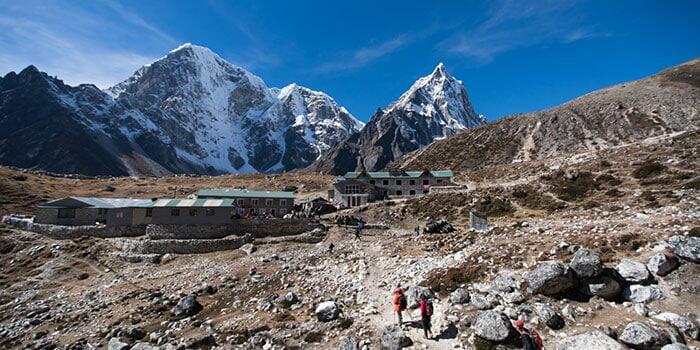
Hiding high up in the mighty Himalayas, there is a system of freshwater lakes known as the Gokyo lakes that are immensely sacred and hold important significance for the Hindus and Buddhists. This 15-day trek to Gokyo Lakes takes you to Gokyo, Gokyo Ri through the famous Namche Bazaar, the Sherpa capital and gateway to Everest.
Trekking in this area rewards you with beautiful views of the mountain peaks and the Ngozumpa Glacier, one of the largest in the world. But most importantly of all, it guarantees the best views of the infamous “eight-thousanders” including Cho Oyu, Everest, Lhotse, Lhotse Shar and Makalu, which are clearly visible from Gokyo Ri (5360m).
The trek starts with a breathtaking flight between the mountains to Tenzing/Hillary airport at Lukla and then follows the Everest Base Camp route then heading out to the Gokyo Valley.
Buddhist prayer flags adorn huge suspension bridges and we will pass many stone walls and Buddhist memorial sites. We aspire to reach Gokyo Ri, the world’s highest freshwater lake system.
Everest Base Camp and Gokyo Lakes Trek Via Cho La Pass
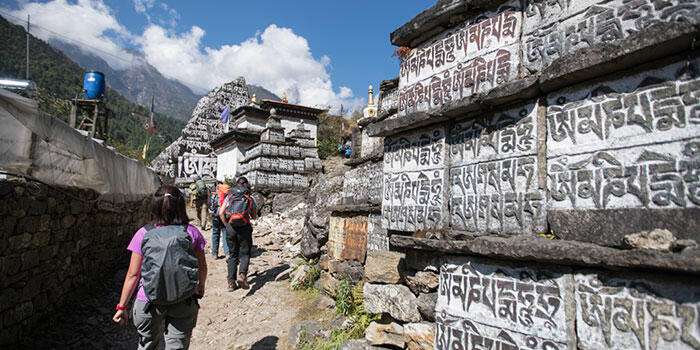
The Everest Base Camp and Gokyo Lakes Trek, also known as Cho La Pass Trek, or Everest circuit trek, is one of the most adventurous and challenging 20-day trek around the Himalayas.
The trek follows the Everest Base Camp route, passing through the vibrant town of Namche Bazaar and the spectacular site of Thyangboche where a magnificent Thyangboche Monastery sits amidst a snow-capped mountain panorama.
After reaching Everest Base Camp, the route continues to the summit of Kala Patthar, a spectacular viewpoint to appreciate Everest in all her glory. You will be impressed by the vistas from there, mountains as far as the eye can see, covered in a blanket of snow in February.
We then head out to conquer the Cho La Pass at 5330 meters. Steep inclines and rocky paths await you but your efforts will be rewarded as you walk through a magnificent high altitude mountain pass. If this was not enough, we then carry on further to the glistening waters of the Gokyo Lake, a system of freshwater and sacred lakes, hidden in the high Himalaya.
This trip really has it all, high altitude trekking, spectacular views insurmountable anywhere else in the world, the beautiful Gokyo Lakes, the welcoming culture of the Sherpa people and a visit to the iconic Everest Base Camp. You also get the opportunity to summit Gokyo Peak (5483 meters) offering astonishing, panoramic views of Cho Oyu, Everest and Makalu.
Tips for Everest Base Camp Trek in February
It is always better to be safe than sorry. As cliche as that sounds, it holds full weight when it comes to trekking in Nepal in February. If you are still planning to trek to Everest Base Camp in February, you will have to be a bit more careful than usual.
If there’s anything I need to give you a heads up on EBC Trek in February, it would be the weather. With proper trekking equipment and clothing, trekking shouldn’t be impossible.
Shorter Days
February marks the end of winter which still means that the days will be shorter, Be sure to start your trek early in the morning. I know it will be cold but trust me, you want to be trekking during the day to be warm and toast by the time cold hits in the evenings again.
Take Proper Gear and Equipment
Taking trekking poles will make a difference you will be grateful for. The Everest Base Camp trail is a series of steep ascents with wide uneven steps. As little as a stick can reduce the impact on your legs and knees.
Take the right hiking boots. Buy Hiking Specific Socks for your hike. Wear a Base Layer. Invest in an accurately rated sleeping bag. Stay warm.
Be Prepared for the cold!
The weather in the mountains is always unpredictable. Even when the forecast is clear, always be prepared for something colder and wetter than anticipated. The weather ‘up there’ at EBC will be prone to storms, rain and snow, and other quick unexpected weather changes.
Keeping a weather check, early and often, is a wise during February.
Let a Professional Guide you
It is recommended that you go with a professional guide. We here at Mosaic Adventure have licensed guides that have all the right information and vast knowledge to keep you entertained through your trek.
If you’re travelling alone, it is always better you have company especially during winter trekking to EBC. We will accompany you throughout the trail and help you with whatever you need all the way to EBC and back!
Hire a Porter
Can’t anticipate it now, but even a load of just a few pounds on your bag can make a vast difference to the difficulty of your trek. Hire a porter. You will thank me on this one.
Especially since it is winter trekking and you will require additional clothing and winter gear, you do not want to miss out on any of your necessities. We can get you reliable porters that will take the load off you to make your trip the most comfortable and a memorable one.
Learn How to Hydrate Properly
It is absolutely necessary that you learn to hydrate properly. I know drinking water is not something you want to do without being thirsty in winter, but it is important that you do when you are trekking.
Trekking to Everest Base Camp in February will sweat you out a lot too. Carry your own bottle, bring water purification tablets with you and make sure you at least drink half a liter of water every hour that you trek.
Other general tips on February trekking would be:
- Start your trek early
- Dress appropriately for the season. It is absolutely necessary that you have the best hiking clothes for a winter trek to EBC. Always better to have more clothes than less.
- Take all the trekking equipments that you may need.
- Hire a porter to share the load. Even if you are somebody who is fit, trekking will demand a lot of mental and physical strength. Carrying a fully equipped bag will get heavy for anyone after an extended duration.
- Take a well experienced guide and be sure to check in at every stop
- Be sure to spare a few days regardless of the season. Unpredictable weather and enexped injuries may cause delays.
What to Wear for Everest Base Camp Trek in February?
Like I said earlier, if you are appropriately dressed, Everest Base Camp Trek in February wouldn’t really be a problem. Preparation is necessary when trekking to EBC at any time of year and it is especially more important during winter weather trekking.
It will be warm enough to be trekking in minimal amount of clothes during the day, while the temperatures yet drop to below freezing at higher elevations.
Almost all winter equipment can be bought or rented at the shops in Thamel, Kathmandu. So you don’t really have to bring them from your country. Prices are also almost the same for the branded clothing, while there are many counterfeit branded clothing.
Unless you are picky about the quality. Be sure to check for the websites online before you purchase from the shops in Thamel.
Here’s a checklist of essential winter gear to have for Everest Base Camp Trek in February:
Clothing:
- Moisture Wicking Tops
- Thermal Wear
- Merino Base Layers
- Convertible Hiking Pants
- Hiking Undergarments
- Thermal wear
Footwear
- Gaiters for hiking in winter
- Hiking Boots
- Hiking Socks
- Hiking Sandals
Jackets
- Down Jacket
- Synthetic Insulated Jacket
- Windstopper Jacket
- Waterproof shell Jacket
Head and Hands
- Sun hat
- Polarized UV Sunglasses
- Warm headgear or a hat
- Bandana or scarf
- Gloves
Equipment List for Everest Base Camp Trek in February
Here is a list of items other than your clothing that you may want to tick off your checklist. To ensure the most comfortable hike, consider carrying all of these items. Although I would recommend you to not carry a load over 7 Kilograms, you can always hire one of your porters to carry your hiking bag.
You can find all of these items in Kathmandu and Pokhara. Unless you are particular about the brand of your toiletries, you do not have to bring all of these from your home country if you already have an excess baggage.
Toiletries and Personal Hygiene
- Sunscreen
- Tissue/Toilet paper
- Mini Personal bathroom set (shampoo, body wash, cream, conditioner, etc)
- Moisturizer
- Antibacterial Sanitizer
- Wet Wipes
- Wet wipes
- Toothbrush and Toothpaste
- Quick drying towel
- Feminine Hygiene products
Accessories
- Day pack (for personal valuable items)
- Trekking poles
- Sleeping bag
- Headlamps
- Personal Water bottle
- First Aid Kit
- Extra plastic bags (to store your garbage on your way and another to keep your things dry)
Other Recommended Items
- Camera
- Binoculars
- Pillow case
- Trail Map
- Sleeping Bags
FAQS
Q1. Is February a good time to go for a Everest Base Camp Trek?
A. February is a good time to trek. It is not high season, and especially not as busy as March and April. But quieter and more peaceful because it is believed that the weather is not suitable.
Q2. How cold will it be?
A. February is winter still but it is not so the coldest time to be at EBC. Maybe I am used to it but January and December are definitely coder. And even others have dealt it with appropriate gears and clothing.
It is a relatively dry month, so typically, there will be little rain and snow, not to be taken for granted of course. I’d say the daytime temperatures are quite warm up to intermediate altitudes.
I have trekked with a single layer, a t-shirt, and sandals up to 3500m later in the month. And there are fewer clouds and the humidity is low too so the mountain views are clear and sharp.
In a nutshell,
Yes, you can do the Everest Base Camp trek in February. Despite it being winter, it’s manageable with proper gear and a guide.
February offers clear skies and fewer trekkers, making it a unique experience. While Spring and Autumn are peak seasons, February provides solitude and stunning views. Expect cold temperatures, especially at night, dropping to around -20°C.
Routes might have snow, and high passes can be closed. It’s crucial to be prepared with warm clothing, hire a porter if needed, and stay hydrated.
Consider alternative treks like Everest Panorama if you want to see Mt. Everest.
For a safe trek in February, it’s crucial to have professional guidance and proper equipment.
We, at Mosaic Adventure, are recommended as the best company for the Everest Base Camp trek. We run guided tours in February as well, ensuring your safety and enjoyment.
Please get in touch with us if you would like to discuss further and tick off the EBC trek from your bucket list.
Want more information? Send us your query, and our experts will get back to you within 24 hrs.
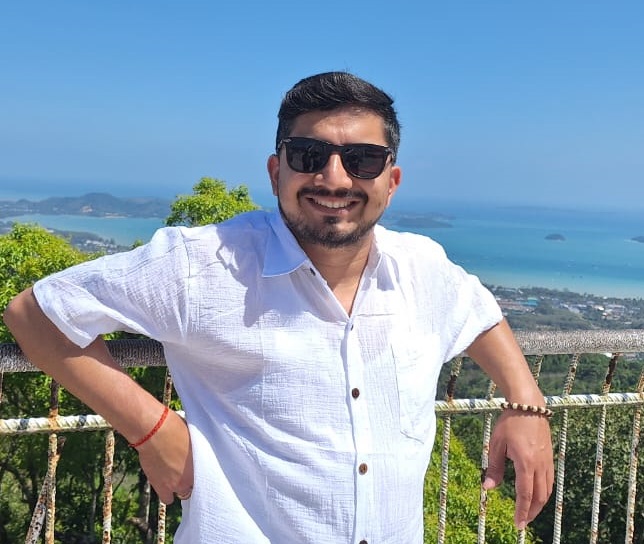
Madhav started working as a porter in 2001 and then moved on to work as a trekking guide. After working in the trekking and tourism industry for eight years, he co-founded Mosaic Adventure in 2009.
Madhav has trekked to most of the trekking destinations in Nepal, including Everest Base Camp Trek, Annapurna Base Camp, Annapurna Circuit Trek, Poon Hill Trek, Jomsom Muktinath Trek, Indigenous Peoples Trek, Langtang Valley Trek, Mardi Himal Trek, and all of the day hikes around Kathmandu.
He has also extensively traveled to other countries such as Australia, the USA, the UK, France, Hong Kong, Japan, China, the Philippines, the UAE, Saudi Arabia, Bahrain, Thailand, Turkey, and India. Madhav is the one who answers most of your questions about trekking and tours and helps to plan your trip by giving a personal touch.

